THE CLASSIC HORROR FILM
By Jeffrey-Baptiste Tarlofsky
By Jeffrey-Baptiste Tarlofsky
Lesson 5 consists of six sections.
In each section, (1) first watch the video lecture, (2) next read the transcript of the lecture (3), then watch the film excerpt. Repeat for each section. For example, in section 2, watch video lecture part 2, next read the transcript for video lecture part 2, then watch film excerpt #2.
レッスン5は6つのセクションから構成されています。各セッションでは、以下の順番で授業を受けてください。
(1) ビデオレクチャー(動画)を見てください。(2) レクチャーのテキストを読んでください。(3) 動画(映画の抜粋)を見てください。各セクションで上記のステップ(1)から(3)を繰り返してください。
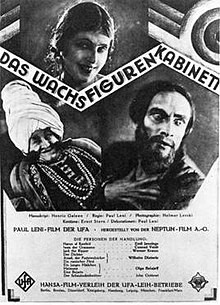
Directed by: Paul Leni
Written by: Henrik Galeen
Starring: Emil Jannings, Conrad Veidt, Werner Krauss, William Dieterle
Distributed by: UFA
Running time: 84 minutes
Produced by: Neptune-Film A.G.
In this class I am telling you the story of how Hollywood made its early classic Horror films. It is a story…and any interesting story is a bit complicated. For example, I began our class by looking at The Phantom of the Opera and Nosferatu. I did that because the first thing I wanted you to think about was how we human beings both do and do not want to see things that fill us with horror. Seeing those films helped us to understand our own psychology better, because there are certainly times when our curiosity gets the better of us as it did with Christine, and there are also certainly times when we cannot bare to look at something as we saw in the case of Hutter hiding under the bedsheets.
In lesson number two we saw Lon Chaney play the part of the Hunchback , Quasimodo. This was the first time in Hollywood history that a “monster’ was the main character in a film. Irving Thalberg himself decided to make The Hunchback of Notre Dame by using something I call “the Thalberg formula”. Thalberg first took a famous novel with a “monster” as the main character, and second he cast Lon Chaney as the Monster, and third he spent a great deal of money on the production of the film to make sure it had gorgeous costumes and impressive sets and thousands of actors. That “formula” was so successful that two years later Universal repeated it with Phantom of the Opera, which we studied in our third lesson. Phantom also came from a famous novel with a monster as the main characte , and it starred Lon Chaney as the Phantom. The film also had the gorgeous costumes, impressive sets and thousands of actors of the previous film. Phantom of the Opera even briefly re-used the amazing wooden reproduction set of Notre Dame Cathedral from the earlier film.
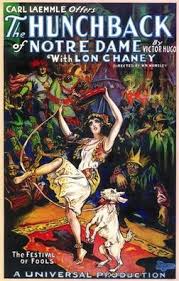
We learned that Lon Chaney was the actor who first made it possible for a “monster” to be the main character of a film. Chaney “made” his monsters through his brilliant and original make-ups. Today he is regarded as the father of such special effects make-up, but…
Chaney also gave performances that revealed what was beneath the ugliness of his monsters. In Quasimodo he created a monster who was ugly, but kind-hearted, a character with whom the audience could sympathize. Erik, on the other hand, was more complex. He was both ugly and evil, but Chaney helped us to understand why Erik was evil and even made us sympathize with him to some degree because Erik actually wanted to stop being evil. This was why he demanded Christine love him. He believed love would cure his evil
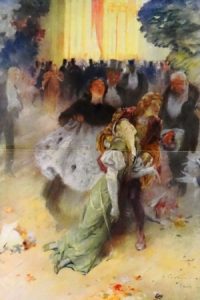
No one understood what Lon Chaney was doing with his monsters better than the man who would become his close friend and the director of ten of his films, Tod Browning. Together they became known as “The Gruesome Twosome” because their films were almost always about deformed or crippled men who were “monsters” of one kind or another. In lesson four we studied Tod Browning’s controversial masterpiece, Freaks (1932). A great deal happened between The Phantom of the Opera made in 1925 and Freaks made in 1932, but I jumped to almost the end of Tod Browning’s career because I wanted us to understand the message in Freaks. It was a message that Lon Chaney certainly would have embraced. The message was simple; do not judge people by the way they look, judge them by what they do. Tod Browning was making it clear that ugliness and evil are not the same thing. More than that, though, Browning’s message seemed to be that discrimination itself was evil. That was an incredibly progressive message for 1932. Remember that in the United States of 1932 it was still impossible for many Black people to vote, it was impossible for Whites and Blacks to marry or even date, homosexuality was a crime punishable by imprisonment, and immigration to the United States was largely closed to Asians because of racism. But In 1932 Tod Browning chose the weakest and most defenseless group of people he could find and made a movie that said “don’t mistreat these people!”. He was incredibly ahead of his time and very brave.
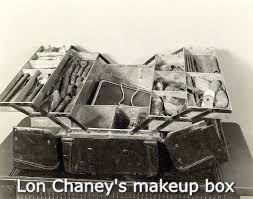
So, our story is about the Horror films, but it is also about the people who made them. The most important people in our story so far are the founder and owner of Universal Studios, Carl Laemmle, his brilliant young Head of Production, Irving Thalberg , the incredible “Man of a Thousand Faces”, Lon Chaney , and the good and brave film director Tod Browning . All four of these men made essential contributions to the creation of Horror films.
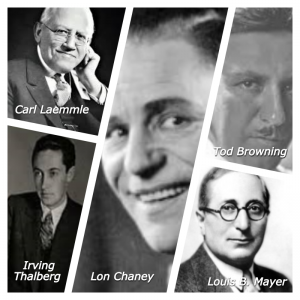
Thalberg was nicknamed “The Boy Wonder” because Carl Laemmle had appointed him Head of Production at Universal when he was only twenty years old. Thalberg impressed everyone who met him with the force of his ideas and the power of his personality. Everyone, absolutely everyone, who met him was at first shocked by how young he was (one female movie star assumed that he was an office boy before realizing he was the boss when he took the seat behind his enormous desk). It was a double shock when experienced directors, actors and writers realized that no matter who was in the room with Irving Thalberg, he was always the smartest person there. The word most often used to describe him was “genius”.
Shortly after producing The Hunchback of Notre Dame, which made a fortune for Universal Studios, Irving Thalberg asked Carl Laemmle for a raise. Despite being the Head of Production at Universal, Thalberg really wasn’t paid very well. Carl Laemmle then made the worst business decision ever made in Hollywood history, he said “no”. His reason was even more infuriating. He said that Thalberg was “too young” to earn more! Think about that for a moment…
Meanwhile, in 1924, a new studio was formed by the merger of Metro studios and Goldwyn studios with Mayer Studios creating M.G.M. The head of the new studio was Louis B. Mayer who immediately offered to hire Irving Thalberg at a greatly increased salary as Head of Production. Thalberg left Universal for M.G.M. and the result was that within a few years M.G.M studios replaced Universal as the most successful studio in Hollywood. Universal would continue on, but it would be a constant struggle, a roller coaster of success and failure for years to come.
Another great blow to Universal Studios came after Lon Chaney finished work on The Phantom of the Opera. He, too, announced that he was moving to M.G.M. Studios which also offered him more money. Once Chaney moved to M.G.M., Irving Thalberg would team him with Tod Browning to make a total of eight films in five years, including their one true horror film, London After Midnight (1927), Hollywood’s first true vampire film which you read about for homework.
I have now reviewed the first four lessons of our class.
But what happened to Carl Laemmle and Universal studios? The departure of Lon Chaney from Universal studios after he finished Phantom of the Opera came as a major blow to the studio because Chaney was Universal’s biggest star and Laemmle was already hoping Chaney would star in Universal’s next big picture for which he had already chosen the story. Again, Laemmle intended to use the Thalberg formula, which had been so successful in the production of the Hunchback of Notre Dame and The Phantom of The Opera. Again he had bought the rights to a famous novel, The Man Who Laughs, by the very same author who had penned The Hunchback of Notre Dame, Victor Hugo. But without Chaney as the star Laemmle put the production on hold for a year while he considered how to replace Chaney. Laemmle made an interesting decision which would eventually change the entire way Universal would produce horror films.
Laemmle decided it was simply impossible to replace Lon Chaney and instead of trying to do so he changed the Thalberg formula. He would replace the genius of Lon Chaney, not with another actor, but would instead depend on the talent of a new director to make Universal’s next giant film a success. This would be a new approach for Universal Studios which had always been known for its stars, not its directors. Carl Laemmle decided to take this approach after seeing a German film entitled Waxworks (1924). Remember that Laemmle himself was a German immigrant and he had kept in touch with the film trends in his homeland. He became aware of a type of film the Germans were calling “Expressionist”. One of these films was Waxworks .The film impressed Laemmle enormously. He was especially impressed with the work of the director, Paul Leni. Waxworks consisted of three separate stories linked together by the fact that each story is about a wax figure of a famous character on display in a carnival where the hero of the story works. We will now see brief excerpts from each of the stories in order to understand why the film so impressed Carl Laemmle.
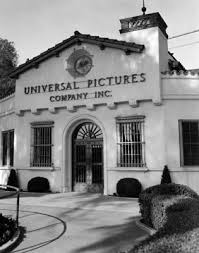
What we have just seen in this excerpt is the young hero escaping from the guards of the Caliph of Baghdad, Harun al Rashid. Two things are immediately noticeable in this scene. The first is that the sets are absolutely nothing like the sets in The Hunchback of Notre Dame or Phantom of the Opera. The sets are completely unrealistic, bizarre and dreamlike. This is exactly was Expressionism was all about. The second thing you notice is that the scene takes place at night and is very dark. This is also characteristic of Expressionism. Now let us see the second excerpt from the story of the mad Tsar of Russia, Ivan The Terrible.
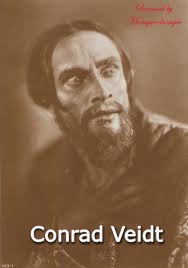
This excerpt is all about the acting. German Expressionism had a very distinctive acting style which put the emotions the actor was experiencing at the center of the performance. The great German actor, Conrad Veidt, plays Ivan in this scene and we know what Ivan feels every second he is on screen because Veidt reveals the whole range of emotions on his face and through his body language. We have seen Lon Chaney communicate using facial expression and body language, but the style of acting was quite different. Where Chaney could communicate a great deal with a small gesture or subtle facial expression, Veidt quite deliberately makes his gestures and expressions “too big, or too much”. That is Expressionism. Expressionist acting style is like Kabuki.
The third excerpt from Waxworks is all about camera work and editing. German Expressionist films used bizarre camera angels and strange shooting techniques to help create the atmosphere of the film. In this brief excerpt the two main characters, the young man and young woman, are chased by no less a monster than Jack the Ripper! What we see the director, Paul Leni, doing during the scene is to use a series of strange angles but even more especially double exposures (meaning that he films one image on top of another once or even twice) in order to create a bizarre and disturbing effect.
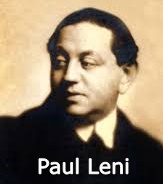
Carl Laemmle had never seen anything like this in a Hollywood film and he offered Paul Leni a fortune (relatively speaking for a German at the time) to come to Hollywood and work for Universal. But Laemmle was a cautious businessman. He had no intention of allowing Paul Leni to direct The Man Who Laughs until he first proved himself with a smaller, less expensive film. Leni was given the job of directing a film called The Cat and The Canary. The film only had a dozen actors and all the action took place inside a single, old (haunted) house. The Cat and The Canary had been a popular play on broadway of the comedy-thriller type then popular on stage and screen. Leni did not disappoint. The Cat and The Canary contained many of the Expressionist elements of style Laemmle hoped Leni would add to the film, but Leni also kept the comic elements of the Broadway play. It was the first successful marriage of the German Expressionist style with an American type of story.
In The Cat and The Canary Leni used multiple exposures to help create a weird atmosphere. He had also done this in Waxworks, but this time rather than merely creating a weird atmosphere, the multiple exposures help tell part of the story.

Directed by Paul Leni
Produced by Carl Laemmle
Screenplay by: Alfred A. Cohn
Based on a Broadway play by John Willard
Starring: Laura LaPlant and Creighton Hale
Distributed by: Universal Pictures
Running time: 82 minutes
We are told that Cyrus West, the aging millionaire, is being kept a prisoner in his own house by his many illnesses represented by the medicine bottles that surround him. In this prison he is like a canary in a cage surrounded by cats (the relatives who are waiting for him to die). Leni isn’t just creating atmosphere with his double and triple exposure shots, he is creating metaphor. A simple definition of metaphor is “a thing representative or symbolic of something else”, (e.g. the Japanese flag with its red disc on a white field is a metaphor for the rising sun)
In addition to his double and triple exposure techniques, Leni also moves his camera through his haunted house with a “dollying” shot (meaning that he has placed his camera on wheels and is actually physically moving it through space as opposed to “zooming” which is changing the focal length of his lens). Leni’s dollying shot creates an interesting illusion.
It almost makes us feel that we are a ghost moving through the house (or that we are seeing what the ghost sees as he moves through the house). This is called a “Point of View” (POV) shot and this is one of the first examples of it that we see used in a horror film.
Speaking of “horror films”, let me conclude lesson five by explaining that while today we call The Cat and The Canary a “horror film”, at the time the film was made the actual term “horror film” had not yet been created. The Germans, called these films “Expressionist”, of course. Lon Chaney had referred to his Hunchback of Notre Dame and Phantom of the Opera as “human tragedies”. In 1927 The Cat and The Canary was actually called a “mystery” when it was released in theaters. Nevertheless, we are gradually getting closer and closer and closer to the first film to ever be called a “horror film”. In the next few lessons we are going to track it down. The hunt, as they say, is on.
